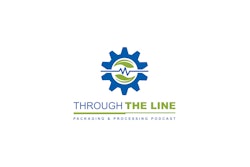On Sept. 18, 2018, just two months shy of the 11th anniversary of the launch of Amazon’s Frustration-Free Packaging Program, Amazon notified thousands of its North American vendors by letter of a new incentive program designed to drive more sustainable packaging that reduces waste and damage and “delights” customers. The new program urges vendors to design their packaging to meet Amazon’s Frustration-Free Packaging Program Certification Guidelines, offering an early-adopter monetary incentive to assist in the transition or the option to face a chargeback per unit beginning Aug. 1, 2019.
On Oct. 31, 2018, Amazon expanded its Vendor Incentive Program to vendors in five European countries: France, Germany, Italy, Spain and the United Kingdom. The deadline for FFP certification for these countries is Oct. 1, 2019.
Brent Nelson, senior manager of customer packaging experience - sustainability for Amazon, explains that the new Vendor Packaging Initiative is not a mandate; rather it presents vendors with an opportunity to rethink and redesign their packaging for e-commerce to reduce much of the packaging currently used for the brick-and-mortar retail channel.
First and foremost, Amazon’s goal is to improve the customer’s experience. This includes minimizing the environmental impact of packaging, which entails reducing the amount of packaging, and lowering the cost of delivering goods to assist in maintaining low prices for customers.
Since 2008, Amazon has worked with brand owners such as Hasbro, Philips, Fisher Price, and Hill’s Pet Nutrition, among hundreds of others, to redesign their packaging per FFP program guidelines—achieving significant success in packaging material reduction and ease of opening. On the 10th anniversary of the FFP Program, Amazon announced it had helped eliminate 244,000 tons of packaging and 500 million boxes since the program’s inception.
While these stats were notable, Nelson says Amazon felt it was time to expand the program, and about a year ago, the global Customer Packaging Experience Team began collaborating with Amazon’s retail teams to bring about the Vendor Incentive Program. “We’re listening to our customers intently like we always do regarding how to reduce packaging materials. Customers expect us to lead in this space,” he says. “We’re maturing to the point where we believe the right thing to do is actually develop packaging that’s ready to ship, where we don’t have to use another Amazon overbox and void fill inside the package. The role of packaging in online retail is different than brick and mortar, which enables the opportunity to reduce the amount of packaging we deliver to customers.
“I often get the question from vendors or others in the industry, ‘Amazon, why can’t you just put a right size-fitting overbox around every product?’ We sell millions of different products. To have a right-sized package for every single product is a significant challenge. We do the best we can in putting items the customer orders in the best-fitting overbox possible, but the solution here is actually having ready-to-ship packaging that doesn’t require additional prep or additional overpackaging.”
Tiers 1 and 2 are first targets
Amazon’s FFP Program is made up of three certification tiers. Tier 1 is Frustration-Free Packaging, comprising packaging that ships in its own vendor-supplied packaging with no overbox required, is easy-to-open, and is made from 100% curbside-recyclable materials. Nelson explains the ready-to-ship concept: “What we buy from vendors, is received into inventory, and then ultimately ordered by a customer is fulfilled in that vendor-supplied packaging.” Easy-to-open involves the elimination of plastic binds, wire ties, and clamshell casings.
Tier 2, Ships In Own Container (SIOC), has the same requirement as FFP, but does not necessarily need to be made from 100% curbside-recyclable materials. An example of a Tier 2 SIOC would be a highly fragile item, such as a television. For these types of products, Amazon recognizes that protective packaging such as cushioning materials may be required to prevent damage. Ultimately, delivering products to customers intact on the first delivery is the expected scenario from a sustainability standpoint.
Tier 3 is Prep-Free Packaging (PFP). This tier addresses the catalogue of items fulfilled by Amazon that are too small to qualify as shipping in their own container—the minimum dimension for SIOC is 9 x 6 x 0.375 in. Examples include a tube of toothpaste or a bottle of laundry detergent. Here, Prep-Free Packaging certification means that no additional prep work, such as bubble wrap or bagging to prevent spills or leaks, is required. Products in this tier are shipped in an Amazon overbox.
For the Vendor Incentive Program, Amazon is tackling Tiers 1 and 2 first, “going after bigger items that have a larger opportunity to address customer concerns around packaging waste,” Nelson explains. These include ASIN (Amazon Standard Identification Number) items with package dimensions of 18 x 14 x 8 in. or greater or 20 lb or more. Excluded are ASINs with any Hazmat classifications or ASINs in Prime Pantry or Amazon Fresh.
To be certified for Tier 1 or 2, packages must pass the ISTA6 Amazon SIOC test—developed and vetted with the International Safe Transit Assn.—which involves free-fall drop testing and vibration testing intended to simulate the conditions an item is likely to subjected to during normal distribution and carrier supply chain processes.
“We’ve seen excellent results in the real world, where an item certified as either Tier 1 or Tier 2 does a great job in terms of performance and preventing damage,” says Nelson.
Incentives and benefits
According to the Amazon Frustration-Free Packaging Program Certification Guidelines, vendors can achieve a number of benefits by redesigning their packaging for FFP. One is the opportunity to reduce costs by optimizing packaging through the elimination of many of the components typically included in standard retail packaging to grab a consumer’s attention.
Nelson concurs: “We have been working for the last several years to help bring awareness to the industry that the role of packaging in brick-and-mortar versus e-commerce is incredibly different. Very simply, the role of packaging in brick-and-mortar is to capture that first moment of truth from a customer and stand out on shelf. Therefore, it’s often oversized with expensive aesthetic treatments, whether it’s substrates or printing.
“In e-commerce, it’s the product, not the packaging that’s often on display to a customer on the online ‘shelf.’ The pitch we’ve all made to vendors is that online retail affords you an opportunity to rethink packaging and ultimately reduce a lot of the packaging you normally would develop for a brick-and-mortar shelf.
“We’ve seen great reaction from the vendor community when we talk about what’s obvious to us, but the online retail model is actually an enabler to reduce packaging waste.”
Another benefit cited by the guidelines is the opportunity to reduce inbound transportation costs. Says the document, “When packaging is optimized for Amazon fulfillment, the package is ‘right-sized’ for the total supply chain. Smaller packages translate to lower transportation costs (more units per pallet/truck/container). It is also less costly for Amazon to ship the same package to the customer, saving money for the vendor, Amazon and ultimately passed on to the customer.”
While the benefits of FFP are clear, it may not be as clear to some vendors as to how to achieve packaging certification. “There is no one-size-fits-all answer,” says Nelson. “We sell millions of different products, and every vendor’s supply chain and manufacturing infrastructure is different.”
To help in the transition, Amazon has put together the Amazon Packaging Support and Supplier Network. APASS comprises of more than 40 companies—including testing certification labs, packaging suppliers, and packaging designers—that can help vendors test, design, and supply packaging in line with Amazon’s packaging certifications. According to Nelson, the network was created in response to Amazon’s realization that they needed “industry evangelists” to be available to help the entire vendor community.
And, Amazon is sweetening the deal with an incentive: an early-adopter credit of $1 per newly certified-and-received unit by Amazon to vendors that certify their items under the FFP Program guidelines by the Aug. 1, 2019 deadline.
Concludes Nelson, “Recognizing the time it takes to change packaging and the complexity, we purposely put the deadline out almost a year to give people time to make a change. In addition, the positive incentive of sharing the cost to help vendors make the conversion is a huge step in the right direction and shows we are willing to partner.”
Hasbro reduces packaging material by 50% with FFP
If brand owner vendors are looking for inspiration on redesigning their packaging to meet Amazon’s new Vendor Incentive Program, they need look no further than Hasbro’s experiences switching to Frustration-Free Packaging. For the past seven years, the toy company has worked with Amazon to convert a number of its toy and game brick-and-mortar retail packs into Tier 1 packaging.
One example is the popular Baby Alive doll, which, in its retail pack, included a number of packaging components, along with multiple twist ties to hold the doll in place. Says Jeff Jackson, Senior Vice President for Hasbro, “It’s incredibly frustrating when you’re sitting with a young child, and you’re trying to get in to open the package for them, and all they want to do is play with it.”
To reduce packaging waste and increase ease of use for its e-commerce products, Hasbro reduced the footprint of the package and used a recyclable corrugated box with a slide-out corrugated insert to hold the doll. Says Hasbro Packaging Engineer Jacquie Patterson, “With Baby Alive, we reduced the amount of material used by over 50 percent. And we reduced the overall size of that package by more than half by switching to Frustration-Free Packaging.”
As for ease of use, with FFP, the doll can be accessed within 14 seconds versus three and a half minutes for the retail pack. “You feel great about it at the end,” says Jackson. “You open it up, you have no waste. It’s much easier to grab that stuff [packaging] and put it in your recycle bin and go.”
Another example is the new Amazon Tier 1 packaging created for Hasbro’s Galactic Heroes BB-8 Adventure. When the toy was shipped in its original retail package along with an Amazon overbox, six steps were required for opening. Redesigning the pack to a SIOC decreased those steps to one. Not only that, but the change also resulted in an 83% reduction in packaging components, from 24 to four; an 81% reduction in package volume, from 5,040 in.3 to 936 in.3; and a reduction of 93% in air shipped, from 4,436 in.3 to 332 in.3.
Says Jackson, “Amazon is great from a collaboration perspective because they help us understand that the shipping journey is changing. We’re thinking differently about how we’re actually packaging products.”
An APASS member’s perspective
Among Amazon’s APASS (Amazon Packaging Support and Supplier Network) members is Fuseneo Inc., a St. Charles, IL-based design firm focusing on innovation. Says Brent Lindberg, company founder and principal, or “Head of Curiosity,” as he is referred to on the company’s website, Fuseneo focuses on pushing brands, helping them explore their packaging potential across platforms and materials. The company has been working with Amazon and other brands to help them redesign their packaging to meet their three-tiered, Frustration-Free Packaging Program.
Says Lindberg of FFP, “Ever since e-commerce has come out, brands have just kind of said, ‘Hey, here you go retailer. Here’s my product, you figure out how to get it there.’ And so, in a lot of cases, brands haven’t taken any responsibility. Amazon reached out to us a couple of years ago to talk about what packaging for e-commerce could look like and how they could encourage brands to take ownership over their packaging.
“Amazon was concerned about sustainability, recognizing there was a lot of damage happening in the chain and a lot of inefficiency in the system due to the retail packaging. So, we started designing some of their own packaging for them as well as working on all of the messaging that went out to brand owners and retailers about these new packaging certifications.”
One of the benefits Lindberg sees of the new Vendor Incentive Program is that it will force brand owners to take a look at the cost of damage to their brand and their bottom line. He says a lot of companies have just accepted damage as a factor of sales or of getting their products online. “It’s not a great business decision,” he says. “It’s a horrible sustainability decision just to allow for high damage rates and call that the cost of business.
“The least sustainable thing that can be done is for products to arrive damaged, then they’re thrown out and have to be replaced, and the shipping back and forth multiplies.”
Fuseneo’s goal is to help brands create efficient designs, looking across materials and across processes to find the packaging methods that will be the most efficient and create the best customer experience, while still passing the ISTA tests.
Lindberg believes a lot of brands won’t need more than a tweak to their packaging to get it to the point where it can be certified. Others may begin by making short-term changes, just to get their products through the system by the deadline, and then go back and rethink their packaging for a more optimal consumer experience. He explains, “We kind of look at redesigning e-commerce packaging as a short-, mid-, and long-term approach.”























